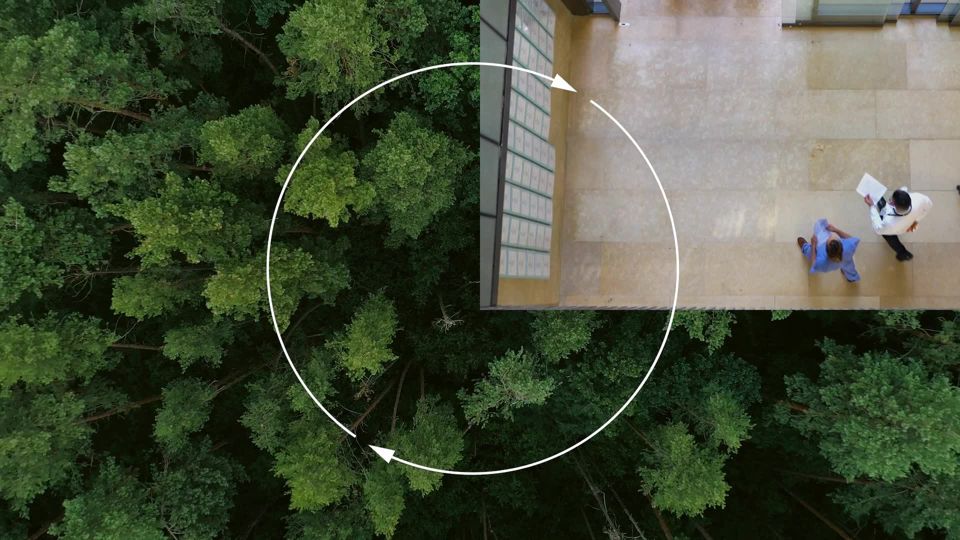Creating climate-friendly health systems in Asia Pacific: a multifaceted problem
Oct 26, 2022 - Reading time 5-7 minutes
Healthcare must upgrade both its physical and digital infrastructure in order to reduce carbon emissions
Both climate change and healthcare have been dominating headlines over the last few years, but they usually only appear side-by-side in relation to the dire effects of increasingly severe weather, like wildfires and heatwaves, on health outcomes. The role the healthcare sector plays in causing or combating global warming remains relatively under-explored. So too is the role that digitalisation could play in the sector’s adaptation and mitigation measures.
A few initiatives are attempting to bridge the first gap, most notably the COP26 Health Programme, a group of nations convened by the World Health Organisation that aims to embed climate considerations into healthcare systems [1]. Although the programme lists 60 countries on its membership roster [2], only nine are in Asia Pacific—and these are mostly small economies in South Asia.
This leaves the vast majority of healthcare emissions in the region unaccounted for. This is an alarming condition for a sector which is responsible for almost 5% of global emissions [3].
Half of the world’s population, many of whom live in the Asia Pacific region, lacks access to quality health care. Digital solutions may hold the key to extending health care access to communities in need while reducing our carbon footprint and minimizing the impact on the environment”
Robert Metzke
global head of sustainability at health technology company Philips.

Scoping out the problem
Tackling this challenge requires understanding the various sources of emissions, or “scopes”, which fall broadly into three categories. Scope 1 emissions encompass those caused directly by healthcare facilities and equipment—fuelling ambulances with petrol, burning kerosene to keep the power humming at rural hospitals and so on. Scope 2 emissions emerge through the consumption of electricity, gas for heating and other indirect forms of energy. Finally, scope 3 emissions represent everything else: carbon dioxide produced from the various activities that surround the sector, from manufacture of medical supplies to disposal of drugs and supplies.
This huge diversity of emissions sources makes it hard for healthcare decision-makers to know where to begin. Even agreement on unified standards to report and publish emissions data remains elusive. Some progress is occurring in the region—corporate greenhouse gas reporting platform CDP says that Asia comprises nearly 30% of its set of global responses [4]—and regulators are considering forcing some sectors to disclose their carbon footprint . Still, experts agree more needs to be done, especially in healthcare.
“You can’t manage what you don’t measure,” says Dr Renard Siew, Climate Reality Leader for the Climate Reality Project, and Climate Change Adviser at the Centre for Governance and Political Studies. “Asia Pacific healthcare sector leaders really [need to] step up to the plate to improve maturity of carbon reporting.”
Health Care Without Harm, a group pushing for healthcare decarbonisation, has laid out a roadmap for the sector, starting with transitioning to renewables like wind and solar to power operations [6]. This may be more difficult than it seems: healthcare organisations are relatively constrained when it comes to where they get their energy from, typically needing to plug into local grids like everyone else.
Where they can affect change, however, is at the policy level: Dr Renzo Guinto, chief planetary health specialist at Sunway Centre for Planetary Health, Malaysia and director of the Planetary and Global Health Program at St. Luke’s Medical Centre in the Philippines, says that the weight of the sector in political circles gives them leverage over questions of energy investment and the shift to greener forms of generation across the broader economy. “The healthcare system does not have full control over the electric grid, but it certainly does have power,” he says.
A thorough accounting of greenhouse gases may uncover emissions from unexpected corners of the healthcare landscape. Dr Guinto notes that executives in hospitals around the world are examining how to reduce the impact of gases that anaesthetise patients during surgery, which, when vented into the atmosphere, can cause significant warming. With Asian healthcare systems poised to boost their use of such gases more rapidly than elsewhere, according to forecasts [7,8], this slice of the market may come under greater scrutiny.
Dr Siew says that more mundane tweaks like renovating facilities to meet stricter energy efficiency standards can make a big difference. Health officials are taking note: in 2021 the US Green Building Council awarded Malaysia’s Ministry of Health a Leadership Award for the green retrofit of a major hospital [9].
But Dr Siew notes these kinds of upgrades are not mandatory in most places and that more must be done. “This is an area we have to push for, because I think it would result in huge emissions reductions directly from hospitals,” he says.
Can digital health save the planet?
The rapid adoption of digital technology in healthcare could help forge creative solutions to the decarbonisation puzzle. Asia Pacific is embracing this trend wholeheartedly: one 2021 survey found that 65% of hospitals in the region are boosting their investment in digitisation [10], while McKinsey declared that “Asia is paving the way for digital health ecosystems [11]”.
Dr Guinto notes that digital solutions like telemedicine can help patients in far-flung parts of the Philippines, his home country of many islands, access care over computers or smartphones without needing to step inside a fuel-burning car or other vehicle. This form of carbon-light provision of healthcare services to those who might struggle to find care otherwise can also boost resilience against climate disasters like typhoons, which are likely to grow fiercer in a warmer world [12].
“In this way, digital health is not only contributing to mitigation; it also can be a climate adaptation response of the health sector as well,” he says.
Mr Metzke agrees, noting that digital technology can help to optimise the patient’s “journey” through their care pathway, reducing resource and energy needs, both on the client and caregiver side.
“If you can treat patients outside of hospitals, which are very energy intensive, and help them to recover in their home with the appropriate level of monitoring so that you can intervene or get them back if needed—this can have a significant impact on your environmental footprint,” he says.

The relative lack of “hard” healthcare infrastructure in Asia Pacific compared with the West gives the region an opportunity to leapfrog in terms of digitisation, says Mr Metzke, in a way that can also lessen the burden on the planet. With nearly half of the population in the Asia Pacific region lacking adequate internet access ,the benefit of digitization extends beyond climate change and health equity and into broader societal benefits such as education and economic inclusion.
Bridging digitization gaps can unlock a variety of innovative ways to decrease carbon emissions, but it will not solve the problem on its own. Only a concerted effort between healthcare executives, care providers, policymakers, the general public and other stakeholders can truly tackle a problem this large and thorny. Dr Guinto, for one, is optimistic that the next generation of healthcare leaders will take the initiative to accelerate progress.
“There is a huge paradigm shift that is happening in healthcare, and it’s the young people that are igniting and advancing this course,” he says. “That’s definitely an important source of hope.”
This article has been commissioned by Philips and written by Economist Impact as part of the Asia Pacific Healthcare Redefined program series.
1 https://www.who.int/initiatives/cop26-health-programme 2 https://www.who.int/initiatives/cop26-health-programme/country-commitments 3 https://www.thelancet.com/journals/lancet/article/PIIS0140-6736(20)32290-X/fulltext 4 https://www.cdp.net/en/articles/climate/asia-pacifics-race-to-net-zero 5 https://www.spglobal.com/commodityinsights/en/market-insights/latest-news/energy-transition/082621-singapore-exchange-proposes-mandatory-climate-reporting-in-key-sectors-from-2023 6 https://healthcareclimateaction.org/sites/default/files/2021-04/HCWH%20Road%20Map%20for%20Health%20Care%20Decarbonization%20-%20Chapter%205.pdf, p66 7 https://www.mordorintelligence.com/industry-reports/anesthesia-gases-market 8 https://www.biospace.com/article/global-anesthetic-gas-masks-market-new-technology-development-analysis-report-2030-/ 9 https://www.gbci.org/2021-us-green-building-council-india-and-southeast-asia-leadership-award-recipients-announced 10 https://www.healthcareitnews.com/news/asia/65-hospitals-apac-are-increasing-spending-digitalisation-says-report 11 https://www.mckinsey.com/industries/healthcare-systems-and-services/our-insights/the-future-of-healthcare-in-asia-digital-health-ecosystems 12 http://climatecat.eu/2020/11/01/super-typhoons-may-be-the-new-norm-due-to-climate-change/ 13 https://www.ses.com/why-closing-digital-divide-asia-important
Stay up to date and subscribe
Sign up to stay informed and receive information on healthcare innovation, straight to your inbox








